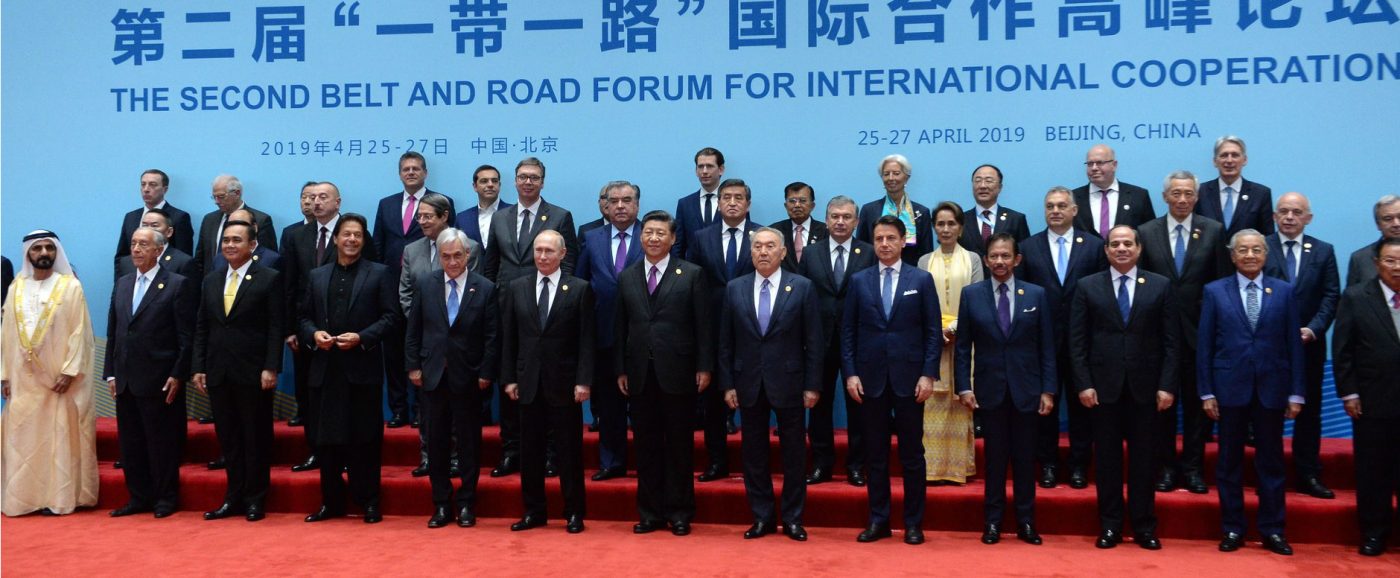The West Needs A China Strategy
Although attention is riveted on Russia as the main adversary of the West, China is developing into a more serious long-term threat. Russia is a revisionist aggressor trying to subvert the transatlantic world but its capabilities will steadily decline. In stark contrast, China is a genuine global competitor with a strong economy and a durable strategy designed to surpass Europe and America.
China’s growing influence is based primarily on its focus on foreign investment, trade, and development assistance. Russia is a minor player in geoeconomics, apart from its supplies of fossil fuels. China has become the key rival for the United States in a sphere where global leadership is ultimately decided. It has the world’s second-largest economy and its per capita Gross Domestic Product (GDP) is projected to grow faster than that of the United States. China is also the largest exporter and second-largest importer of goods.
China’s expanding global clout is not dependent on military power but on economic penetration. It is steadily displacing the United States as the leading trading partner in a number of markets. Beijing is also intent on becoming a leader in advanced technology and higher-end industry.
The Chinese regime has no design to impose its system of government on targeted states but to change global standards for trade and investment that will favor Beijing over its competitors. China’s global ambitions are encapsulated in its Belt and Road Initiative (BRI), involving more than 20 countries and aimed at developing land and sea corridors linking China with Central Asia, the Middle East, and Europe. Unlike Russia’s failing Eurasian Economic Union, China’s Eurasian ambitions are backed by substantial resources.
Beijing is steadily increasing its investments in many BRI countries and seeks to set global regulatory standards that will bestow advantages to Chinese enterprises and undermine the principles of free trade. Beijing has selected investment targets that are viewed as politically profitable inroads into the EU and has bought or invested in assets amounting to at least $318 billion over the past decade.
State-owned Chinese companies have purchased cargo terminals in the Mediterranean Sea and the Atlantic rim and control about a tenth of European port capacity. China is also financing the building of roads and railways throughout South East Europe. This forms part of Beijing’s plans to link China with Europe by sea, road, rail, and pipeline, and also a means to exert political influence.
In exchange for economic investments, Beijing seeks diplomatic support for its policies or to neutralize criticisms in international institutions. Its investments in the Greek port of Piraeus help ensure that Athens dilutes EU condemnations of China’s human rights record and its ambitions in the South China Sea. This formula is repeated across Europe with Beijing aiming to divide Europe from the U.S. and prevent the emergence of an anti-China front. In 2012, China initiated the “16+1” project with 16 countries from Central-East Europe (CEE). Hungary appears to be the biggest beneficiary – according to official statistics total Chinese investment in the country has reached $3.5 billion. Budapest has also vetoed EU motions condemning Beijing’s violations of human rights.
The EU introduced a mechanism for screening foreign investment and declared China a “systemic rival” and “strategic competitor.” However, Beijing’s offers to boost local economies are difficult to resist, particularly by relatively poor countries along the BRI route in search of capital. China’s geoeconomic strategy offers substantial financing but without the regulatory and legal standards on which Western institutions insist.
Washington and its Western partners will need to implement policies that can contain Chinese influence but without damaging the economic development of BRI countries. They need to boost Western competitiveness in foreign markets while ensuring that China’s investments adhere to international standards and do not push governments into becoming permanent debtors.
With more solid economic foundations, China also presents a military challenge in East Asia and is steadily evolving into a global power. It is the second largest military spender with the world’s largest army and its military potential is projected to surpass Russia in the coming decade and become a direct threat to U.S. interests. The range and capabilities of the Chinese air force and navy are rapidly expanding. Beijing is pursuing extensive military modernization with advanced weapons systems and developing next-generation technologies. China is also modernizing and adding new capabilities to its nuclear forces.
China’s ambitions also drive its intelligence activities throughout Europe where its spying networks are expanding. It penetrates the business sectors of Western states and seeks both industrial secrets and political influence. Beijing has also developed sophisticated cyber hacking operations and similarly to Russia it blackmails or bribes vulnerable politicians and businessmen to favor Chinese geopolitical interests.
Although the Kremlin views China as a strategic partner that can help weaken the West, China presents a serious threat to Moscow’s Eurasian aspirations by reorienting Central Asia and other BRI states away from its orbit and challenging Russia’s territorial integrity in Siberia and the Far East. As the struggle between Moscow and Beijing intensifies, Washington will need to develop a strategy of leverage between these two adversaries that benefits Western interests.
Photo: “Participants of the International Forum” by the Kremlin under CC BY 4.0.
WP Post Author
Janusz Bugajski
August 19, 2020
Europe’s Edge is an online journal covering crucial topics in the transatlantic policy debate. All opinions are those of the author and do not necessarily represent the position or views of the institutions they represent or the Center for European Policy Analysis.





